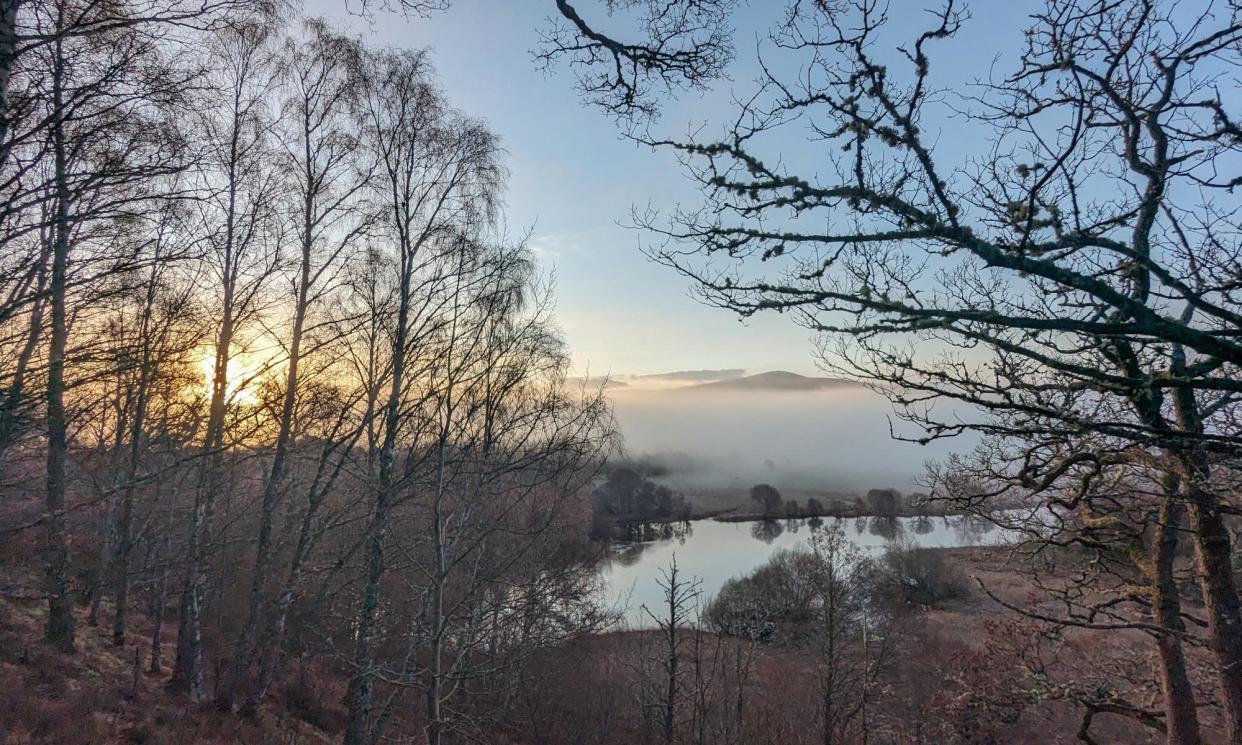Country diary: Goldeneyes glint in the early morning sun

It is just after sunrise on this stretch of the Spey. To the east, the Cairngorm mountains are hidden by a banner of mist, but for one cresting hilltop that catches the sun. The sky’s colours deepen from palest green at the ridgeline, through milky opal, to china blue above. Just below my path, the river swells into a pool so wide and slow that it seems to have forgotten the tug of the sea. Today it is perfectly still, a polished mirror to the vaulting sky, a dancefloor for the waterbirds that skid across its surface.
There is singing. All of the birds, all at once. The pips and slides of the various tits, the chaffinch repeating itself, the holler of geese, the thrush with its coloratura stunts, the oystercatchers peeping like tiny trucks reversing, the woodpecker’s percussion.
A pair of goldeneyes carve a path above the river, their furious wingbeats setting off a distinctive high-pitched ring. It is the sound of hope. This rare duck is a red-listed threatened species that has suffered severe population decline. It first nested in Scotland in 1970 and, with the help of nesting boxes, now has a small stronghold here in Speyside. But there are still only 200 breeding pairs in the UK. The female’s body is greyish, her head a chocolate brown, while the black and white male has an iridescent green head with a white patch; both have golden eyes.
Despite the march of spring, the trees on the riverbank are still bare, a black tracery against the glow, though they are almost thrumming with rising sap, buds about to burst. Spindly aspens stand to attention, while on every raggedy branch of the birches, a thousand dewdrops glitter. The forest floor is rusty still with old heather, trampled bracken and the dregs of autumn’s fall, but lower down, moss spreads in tendrils, spirals, fluffs and curls, almost gleeful in their vibrant greens.
Above it all, the ancient oaks spread their vast arms as if they hold the world together. As I watch the sun burn a hole in the dissolving mist, two swans give it a flypast, their breasts and underwings lit with gold.
• Country diary is on Twitter at @gdncountrydiary


